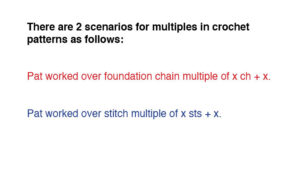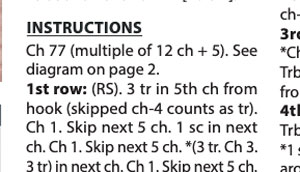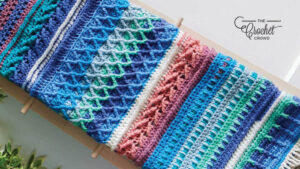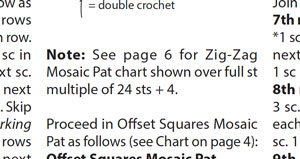
Stitch multiples in patterns allow us to expand the stitch concept to change the sizes of the projects. It can be written in two ways but they mean two different things.
I've been with Yarnspirations so long that I have adapted my pattern writing to match their technical writing. However, there are 3 ways a pattern can be written.
- The designer has their own style of writing.
- Publisher aka Yarnspirations has its own style of writing.
- The industry has standards of writing patterns.
Yarnspirations balance between the industry and their own style but really focuses on the industry side more. This allows you to learn how to read patterns but also purchase books and see others who write patterns, in the same manner, to flow seamlessly.
For example, a Yarnspirations standard is not to say Row 1 but to say 1st row. There are many nuances in their writing that you probably never have noticed. For myself, when something breaks a standard, it jumps out at me.
Recently
I have been second-guessing the pattern repeating in the patterns. They have been giving the stitch multiples more often than ever before but I was not feeling confident about it. The reason for this lack of confidence came back to the Spring 2020 Stitch Along where the stitch multiples were not given as if the project is starting from scratch. What I hadn't noticed is that there are two different ways of writing stitch multiples.
So I reached out to the design team yesterday to inquire about my lack of confidence and whether there was an industry standard. Erin Black, designer of several of our most recent stitch alongs gave me insight that I had never noticed. I also noticed a change in the way the stitch multiple appears as well which prompted my questions.
If there is no diagram, I have been manually drawing it out and confirming it. Each time, the starting chain is included. So I questioned, why wasn't the stitch along done like that? The answer is so obvious, but I hadn't noticed.
Let's review the two.
First Way
The first way is to tell us if we are starting the project fresh.
Pat worked over foundation chain multiple of x ch + x.

Stitch Multiple Example Pat is short for the pattern. Ch is short of the chain. X = number of chains in this case.
- In the pattern, it will appear as an example of (Multiple of 12 ch + 5) as the start of a pattern.
- This is telling us that the pattern to have the repeat is in sets of 12 and when you are happy with the width, add an additional 5 chains.
- The usage of ch after the first number is telling us that we are starting the project from scratch and using chains to get the expansion of changing the size.
- The turning chain to do row 1 is already included in this formula.
Second Way
This way is telling us there is a repeating factor but the project already is started and you are changing the stitches.
Pat worked over stitch multiple of x sts + x.

Stitch Multiple Over Pattern Pat is short for the pattern. Sts is short of stitches. X = number of stitches in this case.
- In the pattern, it will appear as an example of (Multiple of 24 sts + 4) as the start of a pattern.
- This is telling us that the new stitch pattern is worked over 24 stitches with the addition of 4 stitches for the balance. This is not telling us the number of chains to start a project from scratch for this scenario.
- The usage of sts tells us the project already exists and that the stitch multiples are just for the stitch repeating itself. It doesn't factor in the starting chain.
The second way would only appear in a pattern if the pattern is changing midway through instructions. Stitch samplers would be examples of this. Where the stitch is changed and the designer wants you to know there is a stitch multiple change.
Generally speaking, but not always true, I use the starting chain of the project itself to give me an indication of what will work. So the beginning of this project would be (Multiple of 24 ch + 5) if the first row was single crochet across. If I really love a stitch but want to eliminate out other stitches that exist in a sampler, I would start with a single crochet row. The + 5 would create that extra 1 ch needing for a turning chain then I can jump. This is not always true though. In some cases, stitch tensions are taken into account where the number of stitches in the row is changed.

The Crochet Sampler Blues Afghan is an example where just adding an extra turning chain wouldn't work in some portions of this. The stitch counts across certain rows are changed to compensate for tension.
However, I believe if you are determined enough, you will find the solution as there is always an answer if you do the math and work it out.
More Ideas
- Crochet Texture Stripes Baby Blanket Pattern
- Multiples Stitches for Starting Chain
- Crochet Advent Calendar with 12 Ornaments

Rea W. says
So the difference between the two is that the start of the project would be written as chains, and the other is when you already have the starting rows and these writing methods are used for projects that require you to set your own width of the project? I'm not sure I've seen this in the patterns I've worked on. So, interesting topic.
Mikey says
Yes, you got it.